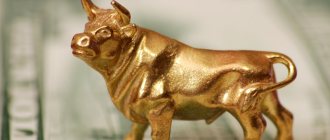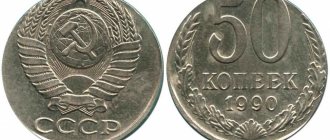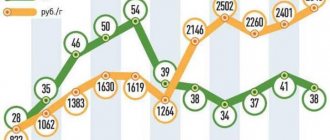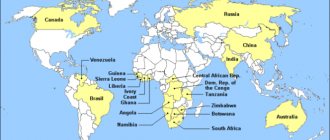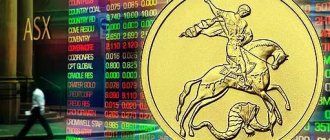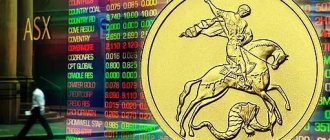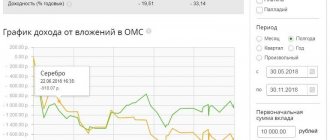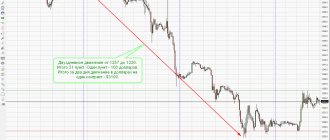The gold price can be influenced by trends that have a short, medium or long term effect over time. Today, financial experts and analysts are trying to come to an understanding of the further dynamics of the gold metal exchange rate. Will gold price drivers support further gains, or should a correction be expected?
To answer these questions, it is necessary to understand what the price of a precious metal depends on at the moment, and what external and internal factors determine it?
What determines the gold rate today?
Factors affecting the price of gold metal today are distinguished by their inconsistency. This can be explained by the fact that gold is in demand in various areas:
- Application in industry and jewelry.
- Use as an investment instrument.
- Formation of strategic state reserves of precious metals.
The reaction of market players to the variability of conditions on which the price depends is different. This leads to the fact that the gold market is constantly influenced by numerous, sometimes contradictory, circumstances. Here are just a few of them:
- Demand for the precious metal from Central Banks;
- The direction of the credit and financial line of regulators and key interest rates;
- Volatility of dollar quotations;
- Demand for precious metal in industry;
- The state of the gold mining industry.
The current gold rate can be determined either by each of the listed factors individually or by their combination.
How to predict gold prices?
Despite the certain “unpredictability” of gold, which is completely in vain, it, like many other assets, also has its own cycles (periods) of changes in value, which, as a rule, last several years and even decades. Based on these long-term dynamics, one can quite accurately predict when the next cycle of decrease or increase in the value of gold will occur.
However, this analysis of long cycles is hardly suitable for short-term investment or trading strategies, therefore, in exchange practice, several simple methods of price forecasting are used, based on the principles of technical (graphical analysis) of gold price dynamics. The simplest of all methods is to use the indicator - “Moving average” or “moving averages”.
Using 17 and 11 month moving averages on the same price chart is effective in predicting long-term trends in the gold market. Thus, in 95% of cases, the price of gold began a long-term decline when the 11-month moving average crossed the 17-month moving average from top to bottom, and with the reverse movement in 92% of cases, a long-term upward trend began.
Using Moving Averages on the Weekly Gold Chart
In the picture
- 1 – 35-week moving average;
- 2 – 55-week moving average;
- 3 – intersection of moving averages.
For shorter time periods, it is most effective to use the 35- and 55-week moving averages on the corresponding weekly charts. With this combination, 89% of the correct signals were received, and on the daily charts, the optimal combination of 89- and 55-day moving averages, which in 72% of cases indicated the correct trend.
What makes this indicator convenient, especially for beginners, is that:
- no additional processing of information or interpretation of the resulting graphs is required
- The ability to get such a chart with all moving averages on the website of any broker, trading platform (exchange), etc.
- A trader does not need any additional preparation to use this indicator in practice.
The only drawback of using this method of forecasting gold prices is that this indicator tends to lag on average by several days or even weeks. But if an investor applies a medium-term investment strategy, then this is not so important. Another simple method for analyzing and forecasting gold prices can be considered the Fibonacci levels method (“golden ratio”).
For example, an analysis of gold charts since 1994 showed that in 85% of cases, upon completion of a trend in this market, the subsequent correction clearly reached Fibonacci levels at 38.2 and 61.8% of the previous trend, which indicates the effectiveness of using this tool for forecasting.
Using Fibonacci Ratios on a Gold Chart
On the chart:
- 1 – correction level 61.8%;
- 2 – intersection of moving averages;
- 3 – fall in gold prices;
- 4 – 17-month moving average;
- 5 – 11 month moving average
An example of the use of Fibonacci proportions can be seen in the above chart, where it can be seen that gold, after an upward trend since October 2008, began a correction in August 2011, which amounted to exactly 61.8% of the 2008–2011 trend. This was due to the end of the Fed's quantitative easing program. It should also be noted here that Fibonacci levels are recommended to be used in conjunction with moving averages that confirm the correction.
How does the price of gold depend on the global economy?
Gold has always been a protective anti-crisis asset. During times of stable economics, the precious metal is supported by its limited natural reserves. Geopolitical and financial upheavals automatically lead to an increase in the interest of investors who want to save their savings and capital in the precious metal. At the beginning of each crisis period, there is a massive collapse of markets, accompanied by a decrease in the value of most assets. At the same time, the gold rate may also decrease for a short time. This is exactly what happened in 2008.
Due to a lack of liquidity, a sale of investment assets, including gold, then began. But the fall in the value of gold was not as large-scale as the collapse of the securities market. Moreover, after this, from 2009, for three years, the price of the precious metal increased 3 times, eliminating losses due to the economic crisis.
In the past 2021, during the coronavirus crisis, the gold rate behaved approximately the same as in 2008. The conditions that prevailed last March led to a decrease in the price of the precious metal. But a month later, a steady upward trend emerged. The securities market could not stand the test and suffered a recession. But gold increased in price greatly, and the precious metal began to bring significant benefits to its owners. At the end of last summer, maximum historical values were reached.
Market analytics and gold rate
In addition to theoretical information about the factors influencing the gold rate, it is important to navigate the reporting of banks and the state related to the gold market.
If central banks are actively buying precious metal for government reserves, gold goes up. If there is a sale of strategic reserves, then the gold rate decreases. Its price largely depends on the huge volumes of metal purchased or sold.
In 2013, there was a significant depreciation of gold. In this case, several reasons can be noted. But the main one was the steps of the Central Bank of Cyprus, which began to sell its gold reserves to combat the consequences of the crisis. Because of this, in just four days the gold rate fell from $1,600 per troy ounce to $1,350 USD.
Traders who realized that the price of the yellow metal depended on this news in the media could trade in the bearish trend for another three days with impressive profits.
How gold reacts to the monetary policy of regulators
Among the reasons determining the price of gold and its decline in 2013 was not only the Cyprus crisis. Around the same period, an information leak was noticed that spoke of the curtailment of quantitative easing measures by the Federal Reserve of the United States of America.
This policy of the US Federal Reserve maintained the liquidity of American markets, saturating them with cash injections, which supported the demand for precious metals. The cessation of monetary stimulation of the economy should have been a key factor influencing the gold rate and reducing the investment demand for this metal.
Key interest rate and its impact on the gold rate
From the situations described above, it is clear how a central bank, such as the US Federal Reserve, can influence gold. But among the factors affecting the price of the precious metal, the key interest rate is important.
When the Central Bank of a state follows the path of quantitative easing and resorts to lowering the key interest rate, or provides other support for market liquidity, the demand for the precious metal and the gold rate always increase. When the key interest rate increases and the volume of fiat money in circulation decreases, the demand for gold and its price decrease.
The listed patterns fairly characterize the line pursued by the European Central Bank, the British regulator, as well as Swiss, Japanese and Chinese banks. But the price of gold on world markets most strongly depends on the policy of the American Federal Reserve System, since the yellow metal is sold only in American dollars.
A little history
Since the seventeenth century, Great Britain has played a key role in determining the price of gold, and there is an explanation for this. The capital of Great Britain - London - already in the seventeenth century became the world center for the purchase of gold, because on the territory of Foggy Albion there was a law on the free import of precious metals. Also in the seventeenth century, all silver coins in circulation were backed by gold money, which increased the global demand for gold. In Great Britain, there were a large number of brokerage houses that served as intermediaries in the implementation of gold purchase and sale transactions, and also played a special role in shaping the gold market. As for the price of gold at that time, it was 4.24 pounds per ounce.
London gold fixing
In order to maintain its position as a leader in the world gold market, Great Britain in 1919 decided to sign an agreement between seven gold mining companies in South Africa and the largest banks in the state. After that, all the gold mined in the African leading country in the field of precious metal mining was delivered to London. This period in the economic history of England is called the “age of the golden five,” and all because five British banks took control of the entire situation on the world gold market, and they also dictated prices for the precious metal. At that time, the price of gold was equal to the British pound sterling, but only until a new leader, the United States, emerged on the world market. For this reason, the price of gold began to be tied to the US dollar.
After World War II, Zurich became the “golden” center, because Swiss bankers managed to skillfully take advantage of the closure of the London market. Since then, almost all gold reserves mined in South Africa have been transferred to large banks in Switzerland. Nowadays, Paris, Milan, and Frankfurt am Main are considered the largest gold markets in Europe. In Asia, the trading centers for the precious metal are Tokyo, Bombay and Doha.
The price of gold today is set under the influence of many factors, not only economic ones. So what determines the price of gold?
How do other financial instruments affect the gold rate?
When the gold rate lags behind the rising prices of exchange-traded assets, investors may prefer financial instruments that are currently more profitable. As a result of an objective comparison, market players always make a choice in favor of the greatest profit. This is clearly illustrated by the events of the crisis year of 2008. Then most investors began to invest in growing securities.
Since 2014, the rising value of shares has significantly outpaced the price of gold. This is confirmed by a comparison of the dynamics of volatility of the XAUUSD and S&P 500 index indicators. The factors influencing the price of gold have developed in such a way that the precious metal has become a loser in comparison with the yield of securities. Therefore, there was a noticeable drop in the gold rate. However, market players who invested in gold for the long term benefited because they were able to buy the metal cheaply.
The influence of the oil market on the gold rate
If we combine the graphs of the dynamics of the gold exchange rate and the price of oil, we will not find any obvious correlation. Trade settlements for oil are carried out in US dollars. During times of economic crises, the cost of “black gold” decreases, and the cost of the precious metal increases. But in history there are examples of the mutual decline of these two assets or their growth.
Compared to gold, oil is a more common commodity asset. It is used for the production of fabrics, plastic compounds, rubbers and medicines. The price of oil is also determined by the market, but the demand for “black gold” is too great.
Some experts believe that the impact of the oil market on the gold rate can be traced, but not enough to classify oil as a factor of fundamental influence.
How can you make money on gold at any time?
Gold is quite suitable as the main direction for your development as a trader, because it is quite easy to predict and can bring stable profits. However, to successfully trade this metal, you need to know some aspects of its pricing, which I will tell you about now.
Among the assets of binary options brokers you can find gold traded on the COMEX
(Commodity Exchange) and the New York Mercantile Exchange
NYMEX
(New York Mercantile Exchange).
- COMEX is one of the divisions of exchanges that trade metals, particularly gold, silver, copper and aluminum.
When dealing with gold, you should take into account the general position of the US dollar, because its price is inversely proportional to this metal. Thus, when the dollar rises, gold quotes decrease, and when the American currency falls, the metal becomes more expensive.
Does the price of gold depend on the geopolitical situation?
When considering the factors influencing gold prices, one cannot ignore the geopolitical situation. Important statements by heads of state, military conflicts, sanctions pressure and trade confrontations not only worsen the situation in the world, but also affect the gold rate.
Geopolitical tensions always increase financial and investment risks. This leads to an increase in the price of gold, which is the main means of protection against inflation and any instability. The price of gold depends most on such key political players as the United States of America, the European Union and the PRC.
Factors affecting the price of gold and related to geopolitics also exist in the Russian Federation. Thus, the sharp increase in the gold rate observed in 2021 can easily be explained by the US-China trade war, which forced millions of investors around the world to redirect existing capital into anti-crisis instruments.
Factors influencing the price of gold
What determines the price of gold:
- Dollar exchange rate: the value of gold is determined by the dollar exchange rate, and all because the dollar, like gold, is also an investment object. Therefore, if the dollar falls, investors who have invested in this currency will try to get rid of assets that have fallen in price and will purchase gold instead of the currency. Due to the increase in demand for gold, its price will increase. When the dollar rises in price, the opposite situation will be observed.
- Natural disasters and political crises in gold exporting countries: natural disasters, mass strikes, civil wars have the most negative impact on the pace of gold mining. This causes a reduction in the supply of precious metal on the world market, which, in turn, affects the price of gold.
- The behavior of the central banks of the leading countries of the world: if institutions decide to increase their gold and foreign exchange reserves, then they begin to buy precious metals, which leads to an increase in the price of gold.
Today, the world price of an ounce of gold is set by the London Metal Exchange. Price determination occurs 2 times a day, and the central banks of the gold pool countries participate in this. The price per ounce of gold is expressed in pounds sterling, US dollars and euros.
Today, every adult can become an investor who invests their capital in gold. There are several ways to invest in gold:
- Buying bullion from a commercial bank: This is a common method of investing in gold. This operation is regulated at the legislative level, and only those banks that have received a license to operate with precious metals can engage in the purchase and sale of gold.
- Opening an impersonal metal account: such an account is opened in exactly the same way as a deposit, but the only difference is that it is expressed in a certain amount of precious metal. After opening such an account, the investor does not become the real owner of the gold, because the purchased metal is in the bank’s precious metals vault.
- Gold trading through a broker: This transaction is carried out on an online stock exchange.
- Buying gold coins: investment and collectible gold coins are offered to the public by banks. Investing in coins is considered the least risky, but at the same time the least profitable investment in gold.
If a person wants to keep his finger on the pulse of the gold market situation, then he is recommended to regularly study analyst reports and follow economic and political news from the world. It is also recommended to monitor what prices are set in the gold market and what influences them.
Impact on the gold rate of industrial demand
The price of gold also largely depends on the demand for the yellow metal in the industrial sector. Global demand for precious metals has the following structure:
- About 9% of the metal is purchased by state central banks.
- Approximately 30% of demand is provided by large and small investors.
- The jewelry industry consumes 53% of the mined metal.
- High-tech production requires 8% gold.
As you can see, the volume of jewelry production should have the greatest impact on the gold rate. But in real life everything is completely different, and the price of gold depends the least on the jewelry industry, which has been proven by analytics.
Among the main drivers of gold prices:
- economic crises and decreased demand for gold in the form of jewelry among consumers;
- economic booms and increasing population demand for gold jewelry.
What affects the price of gold and is it worth putting it in your investment portfolio?
Gold is a metal that has always been a guarantor of reliability and investment protection, but this year this trend began to change.
In 1971, the Bretton Woods system was abolished, which provided for the price of gold to be strictly pegged to the US dollar - $35 per troy ounce. Since then, the “yellow metal” has risen in price by almost 45 times. However, what’s next for the world’s most popular precious metal and should an investor definitely include it in their portfolio?
Gold chart 1970-2012
What determines gold prices?
If we consider the factors influencing the price of gold, then this asset will seem perhaps the most “controversial”. On one side of the scale are factors of consumer and industrial demand, which, as a rule, directly depend on the state of the global economy: if it shows signs of growth, the welfare of countries or individual regions increases, then the demand for metal and, accordingly, its price increases.
On the other hand, there are speculative factors: the economy is “deflating”, the crisis is gaining momentum - global investors are withdrawing money from risky assets and putting it into gold, thereby increasing demand and price.
Today, uncertainty regarding the eurozone economy, the stagnation of the fastest growing Chinese economy and uncertainty regarding the future policy of the US Federal Reserve should, in theory, create a favorable environment for the precious metal. Recently, the possible exit of Greece (Grexit), as well as a number of other states, from the Eurozone has become a particularly pressing issue. And even after successful elections in Greece, the fate of the country’s economy still remains a big question.
Now investors are rushing around in search of “safe” assets, buying up the American dollar, as well as the most reliable government bonds - Germany and the United States. However, in conditions when the yield on 2-year German bonds dropped, for example, to zero on May 30, gold does not look like the worst option to wait out the storm.
However, during the most acute periods of crises, when liquidity is compressed, gold is positively correlated with risky assets. The lack of free cash forces investors to sell all assets, without regard to their fundamental attractiveness. For example, in 2008, when the crisis began to gain momentum, gold increased in price by less than 6%, and in the second half of the year it fell by 10%.
Correlation of S&P index and gold charts
“When there is a liquidity problem in the market, gold ranks with riskier assets and simply sells off,” says Vedant Mimani, portfolio manager at Atyant Capital Global Opportunities Fund.
Has gold lost its status as a “safe haven” due to its high correlation with risky assets? There is a factor that refutes this opinion - the purchase of gold by world central banks: in the first quarter of 2012 they bought 80.8 tons of gold. Central banks in Mexico, Kazakhstan and Ukraine were active buyers of gold in April, while the Philippines increased its gold reserves by more than 1 million troy ounces in March, according to the IMF.
However, some countries are selling gold - for example, Russia at the end of March sold 3.8 tons of gold worth $20 million. But, nevertheless, the numbers speak for themselves - Since mid-2006, Russia has increased its gold reserves from 387 to 833 tons at the beginning 2012.
The largest holders of gold reserves. Source: World Gold Council
As for consumer and industrial demand, the largest consumers are India and China. At the same time, demand for gold in China in the first quarter increased by 10% to 225.2 tons, and in India decreased by 19% to 152 tons. This can be explained by a sharp increase in gold import tax, which caused widespread strikes by Indian jewelers and a fall in the value of the rupee. In general, it is worth noting that in the first quarter, on average, the price of gold increased by 22% compared to the same period in 2011 and amounted to $1,690.
The dynamics of gold are positively affected by the acceleration of inflation, since the precious metal does not lose its value, unlike money. Easing monetary policy is also a powerful driver of growth for gold, since the injection of additional liquidity by central banks into the market implies a warming up of the market and increased inflation rates.
According to the World Gold Council, in 2011 the demand for gold amounted to 4,568 tons, which is 9.4% more than in 2010. However, at the beginning of 2012 the situation changed - demand fell in the first quarter by 5% compared to the same period in 2011 and amounted to 1097.6 tons. According to WGC, this decline is due to weak demand in the jewelry and technology sectors.
Is gold no longer a safe haven without QE3? Traditionally, the active intervention of the American central bank in the economy has had a positive effect on gold, since the injection of liquidity into the financial environment provokes an increase in inflation and makes assets such as gold attractive. It's no coincidence that gold hit its 2012 high in February, when the Fed said it would take stimulus if necessary and promised to keep interest rates at rock-bottom levels through 2014.
It is worth noting that the latest data on the US labor market, published on May 31, were not very encouraging - the number of jobs in the private sector increased by 133 thousand (forecast +150 thousand), and the number of initial applications unexpectedly increased by 10 thousand, but analysts did not expected changes. Following this, truly shocking Non-farm Payrolls were published - in May, the number of jobs in the American economy grew by only 69 thousand, which turned out to be worse than the most pessimistic forecasts.
It would seem that all this only increases the chances of launching QE3, since Ben Bernanke noted that the labor market is recovering extremely slowly and the Fed is ready, if necessary, to take measures to speed it up. However, the latest FOMC meeting disappointed the markets - the regulator only decided to expand Operation Twist by $267 billion, but did not even hint at QE3.
After disastrous statistics in the United States and China in early June, gold rose sharply and rose in price from $1,544 to $1,621 per troy ounce, but the escalation of the crisis in Europe and the position of the Federal Reserve brought the precious metal down to $1,560 by the end of June.
The place of gold in an investment portfolio
Gold is growing year after year, and under certain circumstances this growth will continue. In what form can this be used? Russians have 4 main options for investing in precious metals. And they all have their pros and cons. Read more about this in the material “You have 60,000 rubles and you want gold...”.
The primary role of gold in your portfolio is to protect your capital. This means that you should not expect quick returns from gold; it is a long-term investment. Gold does not deteriorate over time and retains its properties through centuries. The proportion of gold in an investor's portfolio should depend on how much risk the investor is willing to take. If we take the rather turbulent period from 2008 to 2012, we can see that investments in gold brought about 90% of the income.
It is worth noting that, in principle, gold is suitable for various types of operations. Speculators trading in the derivatives market may find gold attractive for their trades. Gold is also suitable for long-term investors who secure their assets for a period of several years. For example, in the period from 2002 to 2012, the price of gold increased more than 5 times, and from 2010 to 2012, the cost of the precious metal increased by 39% (as of the second quarter of 2012).
Gold chart for 2012 with the most important events influencing its dynamics
Bogdan Zykov, BCS Express
Does the price of gold depend on the volume of its production?
We constantly hear that gold production has increased or decreased at certain gold deposits. Such information in the media can change the price of gold in the short term, but over a long period of time this news cannot be considered a factor influencing the price of gold.
The cost of extracting one ounce of precious metal from the depths these days is about $1,000 dollars. In this case, the exchange rate of gold is much lower. It is worth remembering that approximately 37% of the precious metal produced is secondary, with a cost of approximately $600 per ounce. At the same time, most of the gold already mined is stored in reserves and does not participate in circulation on the world market. Therefore, it cannot be said that the price of gold largely depends on mining costs.
Prospects for gold exchange rate dynamics
Only a comprehensive assessment of the factors influencing the price of gold makes it possible to make forecasts for the future price of gold. In this case, it is necessary to take into account some important conditions:
- The global political and economic situation affecting the demand for gold as a protective asset;
- The scale of purchases or sales of gold precious metals by Central banks;
- Availability of monetary support measures for economies from the American Federal Reserve and leading regulatory authorities, as well as the level of key interest rates;
- Dollar quotes relative to the base currency basket;
- Conditions that determine the price of gold, whether it rises or falls, such as the dynamics of the stock market and oil market, demand from the jewelry and general industries, and production volumes.
Gold is an anti-crisis instrument that has a reserve status, limited natural reserves, and retains its purchasing value. The gold rate can be volatile in the short term, but the overall dynamics in the long term are always upward.
What affects the price of gold the most?
One of the keys to understanding the functioning of the gold market, its ups and downs, is to analyze all the factors that in one way or another affect its value. Here we need to talk about reserves, and about mining, and processing, and about use in the jewelry industry, and for investment purposes.
Thus, we can conclude that the gold market is very extensive and is influenced by both small companies - gold producers, brokerage houses, investment companies, and medium-sized ones - various banks and TNCs, and tiny, small investors - speculators, whose share does not exceed one percent. The last few years have been characterized by the active development of the gold market: an increasing number of participants, banks and agents are appearing who are interested in it and use it to increase their capital.
A large number of small investors are trying to get into it by trading virtual gold through a broker, opening metal accounts and making transactions through a bank, i.e. purchasing cash gold, coins, bars. All these methods of increasing and preserving capital are quite relevant and effective in modern crisis conditions.
Among the factors influencing the price of gold, the following should be noted first:
- Exchange or market:
- gold and foreign exchange operations of market maker states in the gold market;
- speculations of leading players in the gold market (“gold bugs” or golden bugs)
- changes in the value of shares of gold mining enterprises;
- investor expectations;
- the value of the US dollar, determined in particular by the Federal Reserve rate
- Over-the-counter or non-market ones include:
- Physical volumes of gold production;
- cost of gold mining;
- volumes of gold consumption;
- interest in the jewelry industry;
- political crises, natural disasters, wars in extractive countries;
- seasonality
The gold and foreign exchange reserves of countries actively participating in the global economy are one of the most important factors influencing the price of gold. States in the modern gold market are the main and key players (market makers) of the gold market.
Based on data on these reserves, investors draw conclusions about how stable the national currency of states is, how much gold the national bank sold or bought over the previous period. Any information obtained from press releases, interviews or other official sources can have a significant impact on the price of this precious metal.
Table 1. Countries with the largest gold reserves
Today, the gold reserves of central banks and other financial institutions of the world amount to more than 35 thousand tons, which is 13 times higher than annual production. More than 60% are reserves of the G7 countries. 16 developed countries and 3 largest international financial organizations (Bank for International Settlements, International Monetary Fund and European Central Bank) combine 80% of reserve gold.
